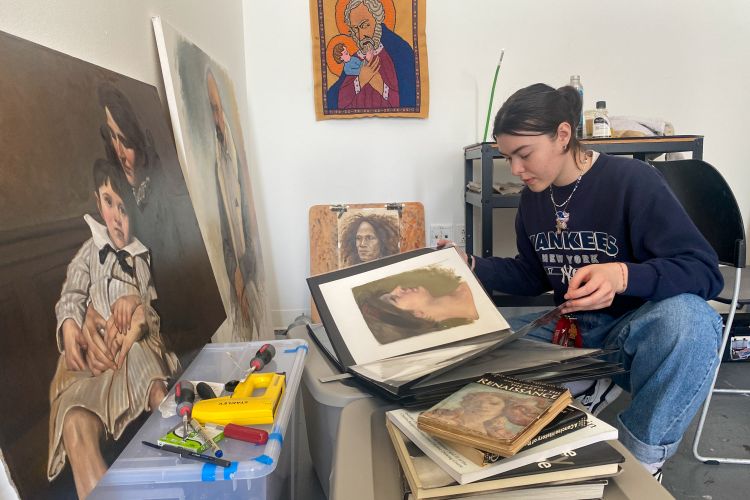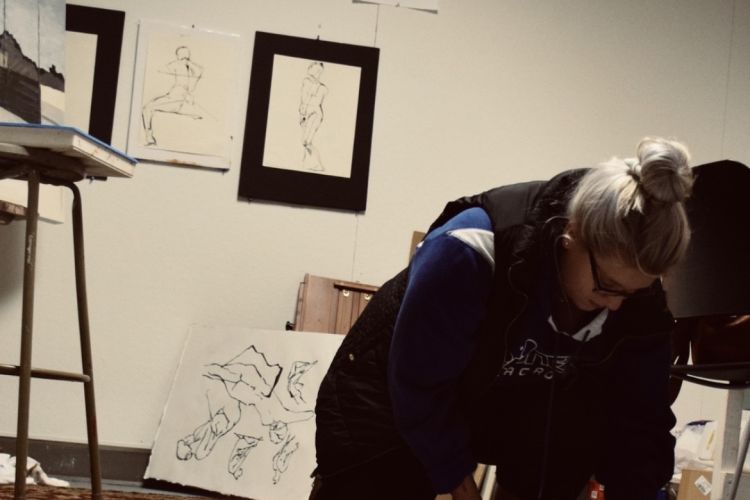Drawing
At PAFA, drawing encompasses all of our programs. The common language for all art disciplines and aesthetic philosophies, drawing is encouraged at every stage, including figure drawing, still life, landscape and abstract approaches using a wide range of drawing media. Technical abilities and a deep appreciation of drawing as a visual language are encouraged at all levels.
Drawing is also recognized as an independent art form in its own right with its own methodologies, techniques and manners of expression. A personal approach to seeing and expressing ideas develops through classroom and independent studio practice, discussions with faculty, research into historical and contemporary uses of drawing and philosophical inquiry.
Cast drawing cultivates a high level of skill in modeling and the use of light to describe form. The life model—one of the most interesting and inspiring tools in drawing—is also featured in most of PAFA's painting and sculpture courses. From the life model, students learn basic rendering skills to help advance interpretive drawing and understand the use of drawing materials, from the more simple charcoal to the more complex mixed-media techniques.
The Samuel M.V. Hamilton Building has outstanding facilities for drawing and painting. These include two skylit studios, a number of large painting classrooms, drawing studios and painting studios, and a rooftop terrace often used for cityscapes.
Cast drawing classes and life drawing classes are held in the breathtaking cast halls of the Historic Landmark Building. These six studios have 20-foot vaulted ceilings and skylights with northern exposure. PAFA’s famous cast collections of antique and Renaissance sculpture have been part of the curriculum for nearly 200 years.








